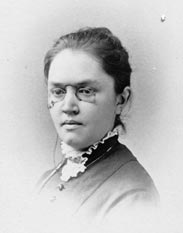Poet John Donne died on March 31st, 1631. Dubbed a metaphysical poet, by Samuel
Johnson, his influence is recognized by Walter Scott in his “The Dramatic Works
of John Dryden”, in which Donne is mentioned numerous times.
‘Although
Dryden's residence at the university was prolonged to the unusual space of nearly seven years, we do not find that he
distinguished himself during that time by any poetical prolusions
excepting a few lines prefixed to a work, entitled, "Sion and Parnassus; or Epigrams on several Texts of the Old and New Testament," published in 1650, by John Hoddesdon. Mr. Malone conjectures that our poet would have contributed to the academic collection of verses, entitled, "Oliva Pacis," and published in 1654, on the peace between England and Holland, had not his father's death interfered at that period. It is probable, we
lose but little by the disappearance of any occasional verses which may have been produced by Dryden at this time. The elegy on Lord Hastings, the lines prefixed to "Sion and Parnassus," and some complimentary stanzas which occur in a letter to his cousin Honor Driden, would have been enough to assure us, even without his own testimony, that
Cowley was the darling of his youth; and that he imitated his points of wit, and quirks of epigram, with a similar contempt for the propriety of their application. From these poems, we learn enough to be grateful, that Dryden was born at a later period in his century; for had not the road to fame been altered in consequence of the Restoration, his extensive information and acute ingenuity would probably have betrayed the author of the "Ode to St. Cecilia," and the father of English poetical harmony, into rivalling the metaphysical pindarics of Donne and Cowley.’
distinguished himself during that time by any poetical prolusions
excepting a few lines prefixed to a work, entitled, "Sion and Parnassus; or Epigrams on several Texts of the Old and New Testament," published in 1650, by John Hoddesdon. Mr. Malone conjectures that our poet would have contributed to the academic collection of verses, entitled, "Oliva Pacis," and published in 1654, on the peace between England and Holland, had not his father's death interfered at that period. It is probable, we
lose but little by the disappearance of any occasional verses which may have been produced by Dryden at this time. The elegy on Lord Hastings, the lines prefixed to "Sion and Parnassus," and some complimentary stanzas which occur in a letter to his cousin Honor Driden, would have been enough to assure us, even without his own testimony, that
Cowley was the darling of his youth; and that he imitated his points of wit, and quirks of epigram, with a similar contempt for the propriety of their application. From these poems, we learn enough to be grateful, that Dryden was born at a later period in his century; for had not the road to fame been altered in consequence of the Restoration, his extensive information and acute ingenuity would probably have betrayed the author of the "Ode to St. Cecilia," and the father of English poetical harmony, into rivalling the metaphysical pindarics of Donne and Cowley.’

